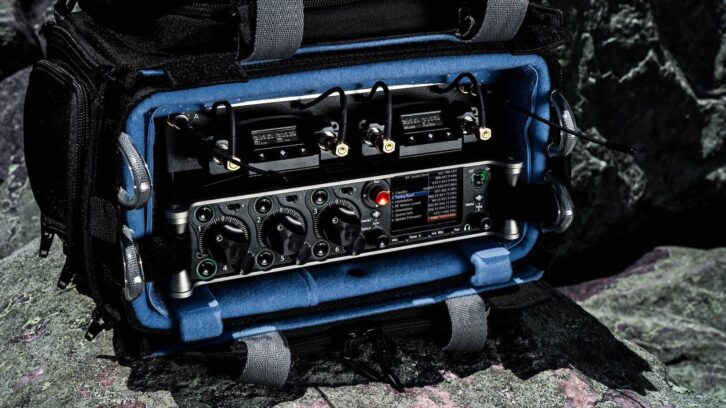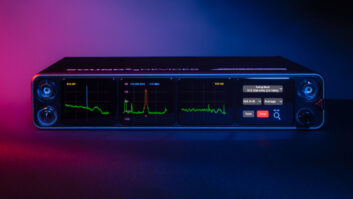
This article originally appeared in the November 2022 issue of Mix. Innovations is a monthly column in which different pro audio manufacturers are invited to discuss the thought process behind creating their products of note. Matt Anderson is the CEO of Sound Devices.
As any professional in the business of wireless audio will tell you, clean, usable RF frequencies are valuable real estate. Within the past 15 years, however, frequencies have been getting auctioned off to the highest bidders for use by telecom companies, ISPs and others around the world. The unintended consequence of this is that there’s fewer legal UHF frequencies available for film and tv production, live sporting events, concert performances and other circumstances where wireless is traditionally used. The added challenge is that these productions are using more and more wireless microphones, which creates a twofold problem: How do you make room for all those wireless microphones when there are fewer legal frequencies to operate at?
This was the challenge that we set out to solve with SpectraBand, the technology powering our latest wireless receiver, the A20- RX, and our A20-Mini transmitter. How could we open up additional usable—and legal— bandwidth for wireless audio professionals in an ever-changing RF landscape? Not only that, but could we do it without creating excess equipment for the traditionally overloaded sound mixer to carry around?
We designed SpectraBand from the onset to have an unprecedented tuning range—470 MHz to 1525 MHz. I say unprecedented because traditionally manufacturers have offered multiple transmitters in a production line to each cover specific bandwidths for specific global territories. Getting all of those frequency bands to work within the same device was immediately a challenge; it required precision engineering, top-of-the-line parts, and a lot of time and development money to ensure that the system performed perfectly at all frequencies. Not only that, but every one of those frequency bands had to be approved by a regulatory body before we could move forward. This process required a lot of patience for the back-and-forth required to get everything right.
Next, we needed to ensure that the form fit the function of these devices. Given our heritage in film and television production, our team is ever mindful of the plight of the production sound person. These folks are operating in arguably one of the most difficult places to make wireless microphones work well, and often have very limited space in which to work. That meant we needed to employ every aspect of our experience in advanced manufacturing by utilizing extremely tiny parts at what we consider to be the extreme of what is possible, consuming every last millimeter of space in the chassis. Fortunately, doing so has been in our DNA for years as we have led the way in shrinking large rackmount HDD recorders into portable devices. We also have the benefit of the experience of Audio Limited, which we brought into our team in 2018, and aligned with our design philosophy of rock-solid devices made to the utmost quality that fit into the tiniest packages. Their years of wireless expertise were essential to this process.
Finally, the types of filters we chose for SpectraBand’s front end are some of the most important aspects of why the technology works so well. As the number of wireless microphones, transmitters and receivers has grown in any given production or event environment, and the range at which these devices need to operate has increased, utterly reliable filtering is essential. Many of our customers who are longtime RF engineers will be familiar with SAW (Surface Acoustic Wave) filters, which we chose because they are very resistant to strong frequencies in different bands that would otherwise interfere with wireless reception. Doing so gives A20-RX, and by extension any future SpectraBand-equipped receivers, a very wide operating bandwidth that can be tuned to work at great distances, but with absolute brick wall filtering that can be relied on in the most crowded RF environments. Getting this right was incredibly important to us and it increased the ease of use of these receivers.
What’s next for SpectraBand? The good news is that as a concept, a wireless device that offers many channels and wide usable bandwidth in a small package lends itself to many other markets outside of the strict film and television production mold. As Sound Devices looks to the future, we’re eager to explore further based on what we’ve uncovered, and will continue to design devices that offer excellent performance and sound quality in as small of a package as possible.







